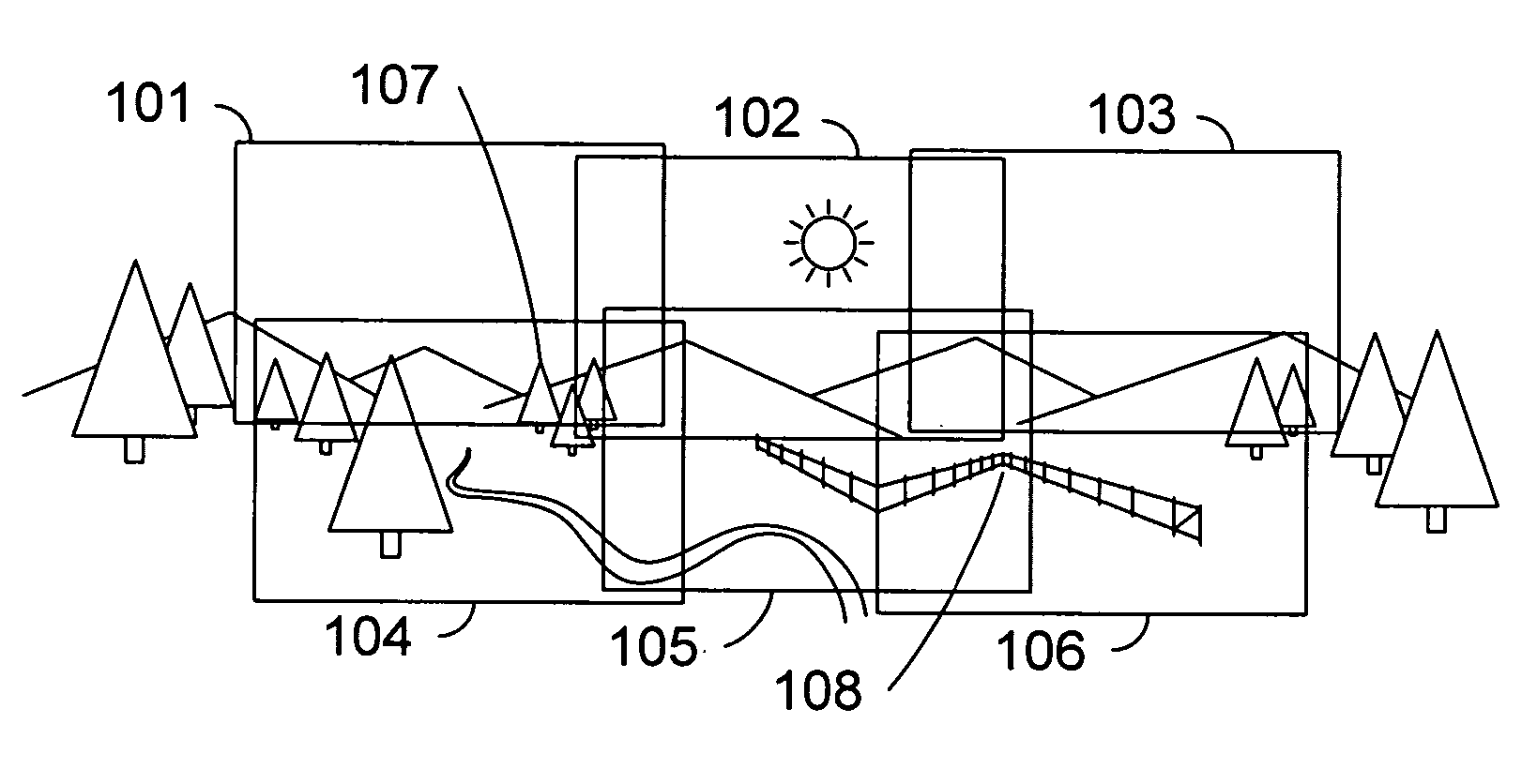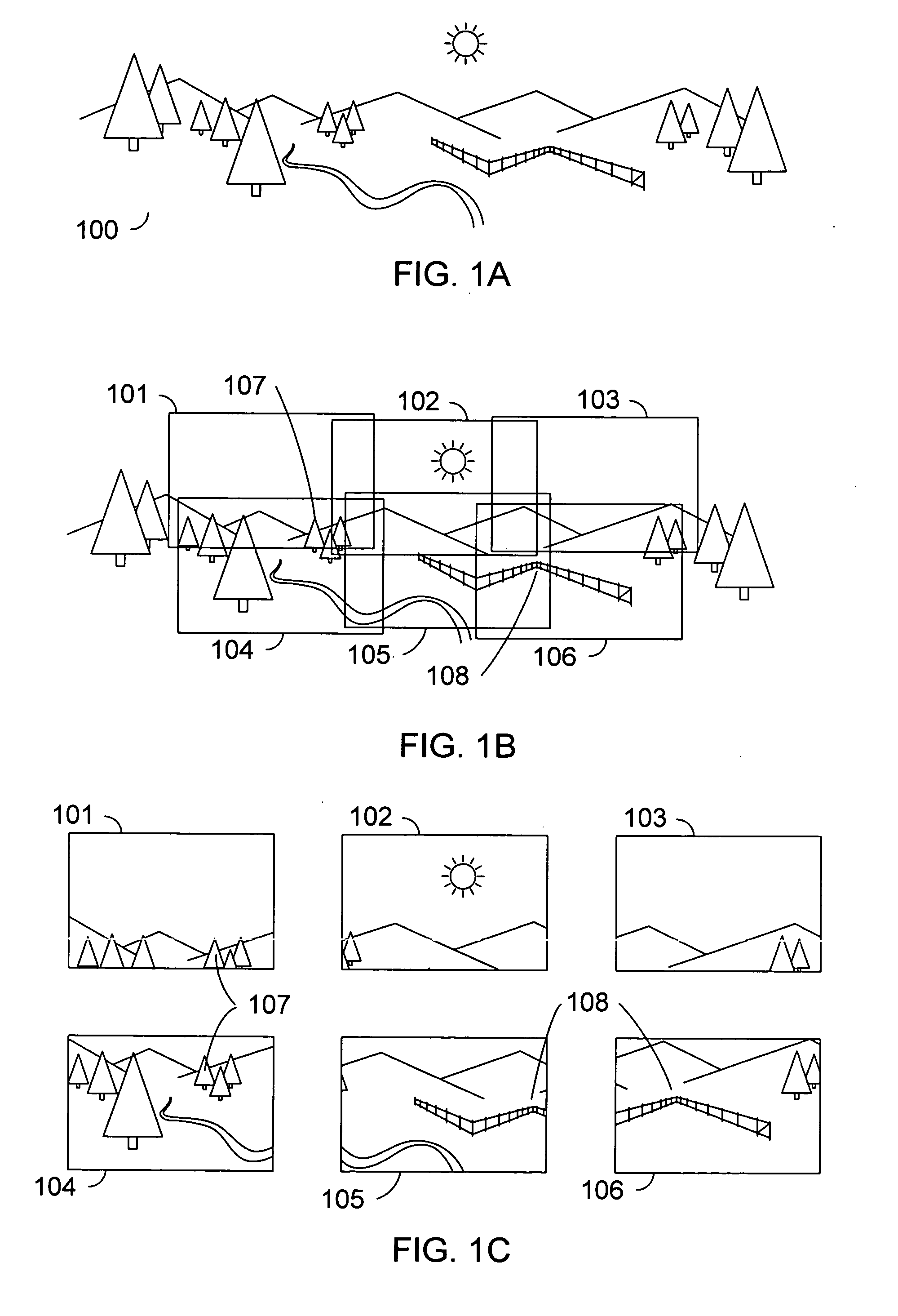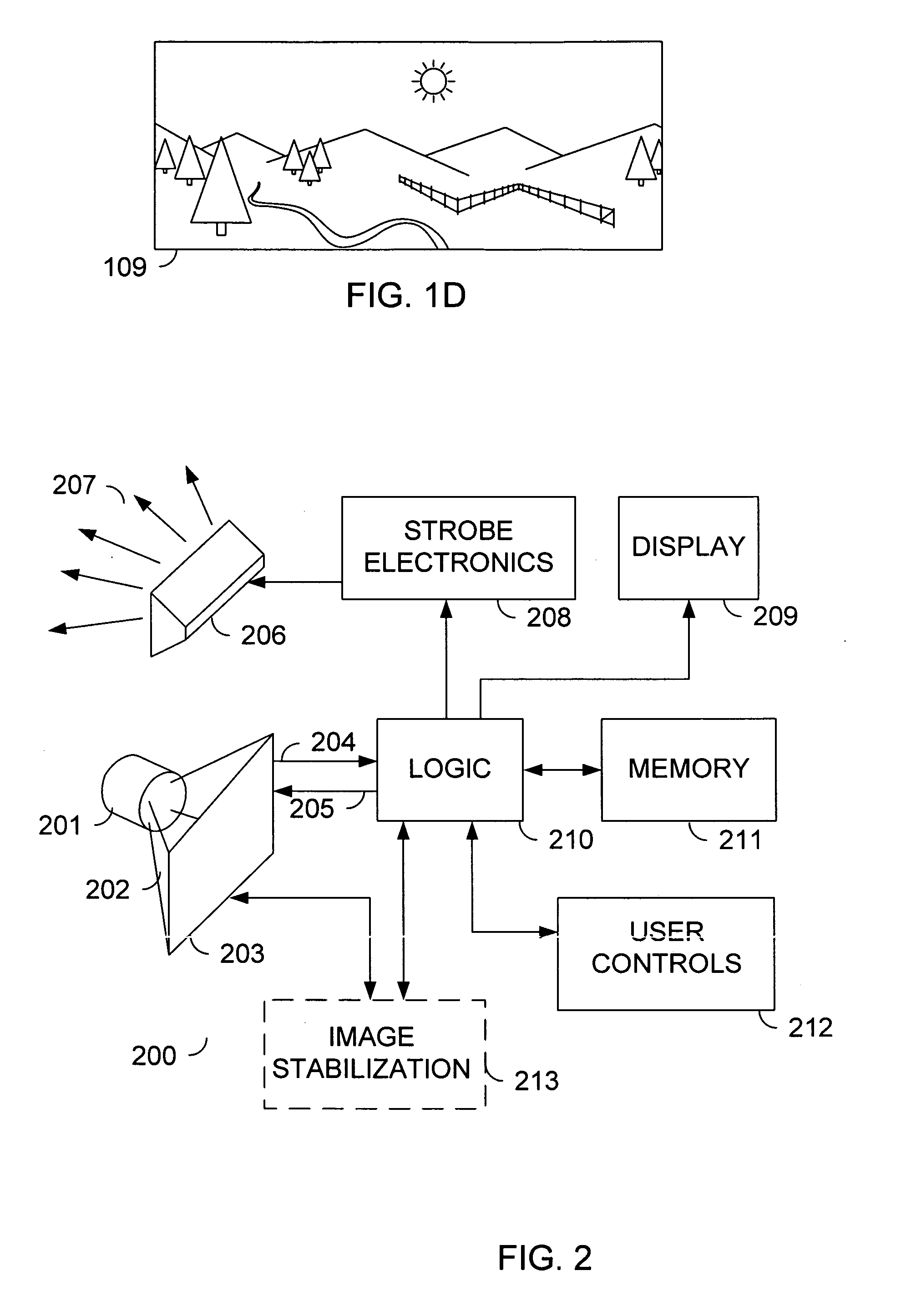Method and apparatus for composing a panoramic photograph
a technology for panoramic photographs and compositions, applied in the field of panoramic photographs, can solve the problems of mosaic damage, camera users may struggle to take a suitable set of component photographs, and cameras typically do not provide assistance for composing two-dimensional mosaics
- Summary
- Abstract
- Description
- Claims
- Application Information
AI Technical Summary
Problems solved by technology
Method used
Image
Examples
Embodiment Construction
[0021]FIG. 2 shows a simplified block diagram of a digital camera 200. Lens 201 gathers light emanating from a scene, and redirects the light 202 to an electronic array light sensor 203. Sensor 203 comprises an array of light-sensitive elements, often called pixels. Each pixel on array 203 corresponds to a particular scene location by virtue of the operation of lens 201. A common type of electronic array light sensor generates, at each pixel, electric charge at a rate proportional to the intensity of light falling on the pixel, and stores these charges in charge coupled devices. Such a sensor is often called a “CCD sensor”, or simply a “CCD”. Other kinds of sensors may be used as well. In many cameras, each sensor pixel also comprises a color filter so that color information about the scene is obtained. One of skill in the art will recognize that the invention may be embodied in a camera with color capability or one without. Sensor 203 communicates image data signals 204 to logic 21...
PUM
 Login to View More
Login to View More Abstract
Description
Claims
Application Information
 Login to View More
Login to View More - R&D
- Intellectual Property
- Life Sciences
- Materials
- Tech Scout
- Unparalleled Data Quality
- Higher Quality Content
- 60% Fewer Hallucinations
Browse by: Latest US Patents, China's latest patents, Technical Efficacy Thesaurus, Application Domain, Technology Topic, Popular Technical Reports.
© 2025 PatSnap. All rights reserved.Legal|Privacy policy|Modern Slavery Act Transparency Statement|Sitemap|About US| Contact US: help@patsnap.com



